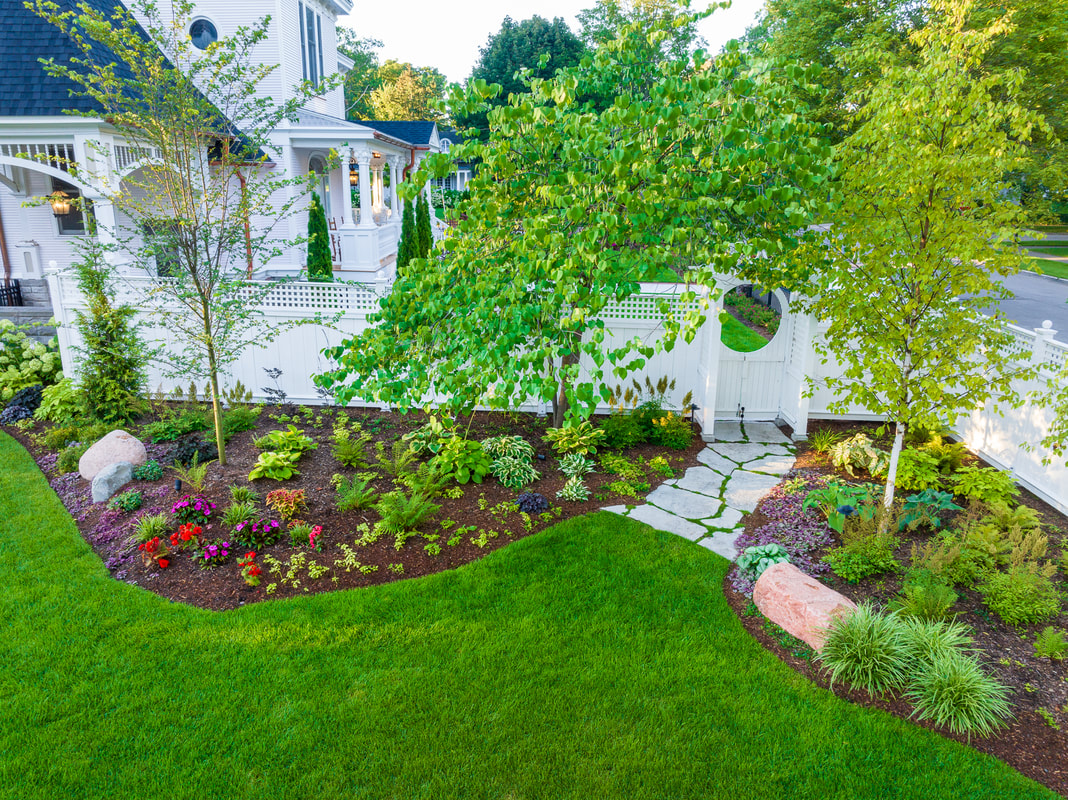The smart Trick of Hilton Head Landscapes That Nobody is Talking About
Table of Contents4 Simple Techniques For Hilton Head LandscapesAbout Hilton Head LandscapesNot known Factual Statements About Hilton Head Landscapes What Does Hilton Head Landscapes Do?Hilton Head Landscapes Fundamentals ExplainedThe 9-Minute Rule for Hilton Head LandscapesThe Greatest Guide To Hilton Head Landscapes
Line develops all types and patterns and can be used in a variety of means in the landscape. Line in the landscape is produced by the side in between two products, the outline or shape of a type, or a lengthy direct feature. Lines are a powerful device for the designer because they can be made use of to produce an unlimited variety of forms and types, and they control motion of the eye and the body.

Lines can have several characteristics, such as those defined below, yet they generally offer different functions. Figure 1. Lines in the landscape - Landscapers near me. The residential or commercial properties of lines establish just how people react to the landscape, both mentally and literally. Straight lines are architectural and powerful; they develop a formal personality, are usually related to a symmetrical layout, and lead the eye directly to a focal factor.
The 7-Minute Rule for Hilton Head Landscapes
Straight lines are usually discovered in hardscape sides and product. Bent lines create a casual, all-natural, unwinded character that is connected extra with nature and asymmetrical balance. Curved lines move the eye at a slower speed and add enigma to the area by developing surprise sights. Upright lines relocate the eye up, making a room really feel larger.
Upright lines in the landscape consist of tall, slim plant product, such as trees, or tall structures, such as an arbor or a bird house on a post. Straight lines relocate the eye along the ground plane and can make a space feel bigger. Low lines are much more controlled and produce a feeling of remainder or repose.
Not known Facts About Hilton Head Landscapes
Low lines are created by reduced garden wall surfaces, walkways, and short bushes. Lines are utilized to attract types on a strategy. In strategy view, they specify plant beds and hardscape locations. Lines are likewise developed by the vertical forms of developed features and plant product. There are 3 primary line kinds that create kind in the landscape: bedlines, hardscape lines, and plant lines.
Bedlines attach plant material to your house and hardscape due to the fact that the eye complies with the line, relocating the look via the landscape. Hardscape lines are created by the edge of the hardscape, which delineates the developed structure. Line can likewise be developed by long and narrow materials, such as a fencing or wall surface.
A Biased View of Hilton Head Landscapes
Kind is located in both hardscape and plants, and it is typically the leading aesthetic element that spatially arranges the landscape and frequently determines the style of the yard. The form of frameworks, plant beds, and garden ornaments also figures out the total kind theme of the garden. Official, geometric kinds include circles, squares, and polygons.
Plants develop type in the garden with their details or silhouettes, however type can also be defined by a void or unfavorable space between plants - landscape design hilton head (https://giphy.com/channel/h1tnhdlndscps). Circles can be cycles, or they can be divided into half circles or circle sectors and incorporated with lines to develop arcs and tangents
The 10-Second Trick For Hilton Head Landscapes
Circles are a solid style kind due to the fact that the eye is constantly drawn to the facility, which can be made use of to stress a focal factor or link various other kinds. Circular kinds in hardscape and lawn panels.
The square type can additionally be fractional and pre-owned continuously to develop a grid pattern. Unlike circles, squares are more powerful on the sides, which can be page lined up or overlapped to develop unique patterns and more complex types.
Twisting lines typically mimic the natural program of rivers or streams and can be called smooth lines with deeply bent wavinesses. Meandering lines (Figure 3) work well for paths, plant bedlines, and dry stream beds. Twisting lines can add interest and mystery to a garden by leading viewers around edges to discover new views and rooms.
See This Report on Hilton Head Landscapes
.jpeg)
Typical plant forms are well developed and standardized, as kind is the most constant and well-known attribute of plants. Form can additionally be developed with the massing of plants, where the general mass creates a various form than a private plant.
A highly different form needs to be utilized with careone or 2 work well as a focal point, yet way too many develop disorder. Natural plant forms, as opposed to over-trimmed forms, must establish the mass of the make-up. The significance of total type is much more or much less depending on the watching perspectivethe form of a tree can appear fairly different to an individual standing under the canopy versus checking out the tree from a range in an open field.
10 Simple Techniques For Hilton Head Landscapes
Plant forms also produce and define the space or open rooms in between the plants, developing either convex or scooped forms in the voids. High-arching tree branches typically develop a concave open room under the branches, and a rounded canopy with low branches fills up the space to develop a convex form in the open area under the tree.
